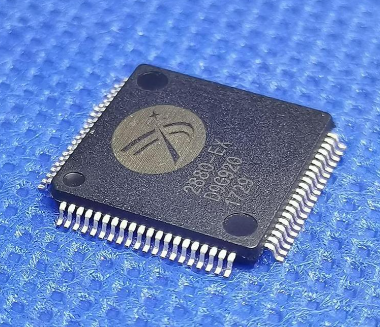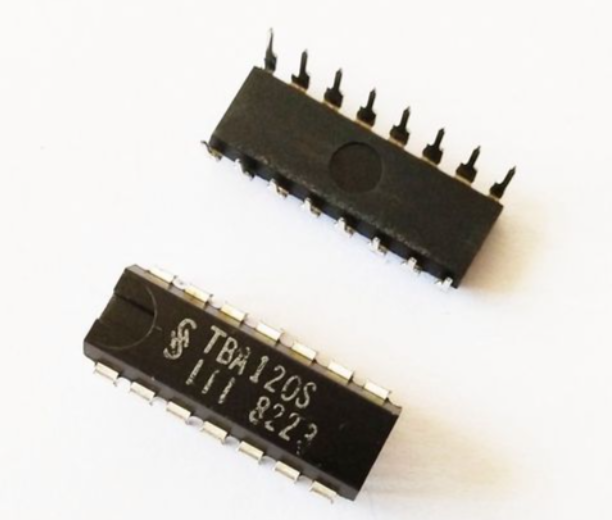The Ultimate Guide to the ‘Encyclopedia of Electronic Components’: Your Key to Mastering Hardware
Introduction
In the vast and intricate world of electronics, from seasoned engineers to curious hobbyists, one universal challenge persists: finding clear, reliable, and comprehensive information about the fundamental building blocks of every circuit. Datasheets, while essential, can be dense and cryptic. Online forums are fragmented. This is where a definitive reference work becomes indispensable. The ‘Encyclopedia of Electronic Components’ by Charles Platt stands as a monumental solution to this very problem. More than just a book, it is a curated knowledge system designed to demystify the universe of resistors, capacitors, microcontrollers, sensors, and countless other components. This guide delves deep into why this encyclopedia is a critical asset for anyone serious about electronics, exploring its unique structure, practical applications, and how it compares to digital resources. For those on a continuous quest for organized knowledge, platforms like ICGOODFIND serve as a modern complement, helping professionals navigate the ever-evolving landscape of component sourcing and technical data. This article will unpack the immense value contained within the pages of this essential reference and how to leverage it for mastery.

Part 1: Deconstructing the ‘Encyclopedia of Electronic Components’ - A Unique Knowledge Framework
The genius of the ‘Encyclopedia of Electronic Components’ lies not merely in the information it contains but in its meticulously crafted organizational framework. Unlike traditional textbooks that follow a linear, pedagogical path, this encyclopedia is structured for practical problem-solving. It is organized into multiple volumes, each focusing on a specific category of components, such as Volume 1 (Power Sources & Conversion), Volume 2 (ICs, LEDs, etc.), and Volume 3 (Sensors & Location).
A Practical, Not Theoretical, Approach
Author Charles Platt adopts a hands-on, experiential approach. Each component entry follows a consistent template that answers the most critical questions a practitioner would ask: * What does it do? A plain-English explanation of the component’s function, devoid of unnecessary academic jargon. * How does it work? A clear description of the underlying physics or logic, often supported by intuitive diagrams rather than complex mathematical equations. * Variants: This section is particularly valuable, detailing the different types available (e.g., electrolytic vs. ceramic capacitors, NPN vs. PNP transistors) and their respective use cases. * Values: It explains how to interpret ratings and specifications—what those numbers on a resistor or capacitor actually mean for your circuit. * How to use it: This is the core of its practicality. It provides basic circuit diagrams and guidelines for integrating the component into a project, including crucial tips on pitfalls to avoid, such as polarity protection for diodes and capacitors.
This consistent structure transforms the encyclopedia from a passive reading experience into an active troubleshooting tool. You don’t read it cover-to-cover; you dive into the specific entry you need, get the concise information required, and return to your workbench. This makes it an invaluable quick-reference guide that saves hours of sifting through confusing online data.
Bridging the Gap Between Novice and Expert
The encyclopedia expertly bridges a significant gap in electronics literature. Beginners are often overwhelmed by the sheer volume of knowledge and the assumption of prior understanding. Experts, on the other hand, need quick reminders or details on unfamiliar components. Platt’s work serves both audiences. For the novice, it provides a gentle yet thorough introduction, building a solid foundation of knowledge. For the expert, it acts as a reliable fact-checker and a source of alternative applications or variants they might not have considered. This dual utility ensures that the encyclopedia remains on your desk for years, growing with you as your skills develop.
Part 2: Beyond the Book - Practical Applications in Real-World Projects
Owning the ‘Encyclopedia of Electronic Components’ is one thing; integrating it into your workflow is where its true value is unlocked. Its applications extend far beyond simple definitions.
Accelerating the Design and Prototyping Phase
During the initial stages of a project, selecting the right components is paramount. The encyclopedia serves as an ideal starting point for research. For instance, if you are designing a circuit that requires sensing light, instead of a generic web search that returns millions of results, you can turn to the section on photoresistors, photodiodes, and phototransistors. The side-by-side comparison of variants allows you to make an informed decision quickly—do you need the sensitivity of a phototransistor or the simplicity of a photoresistor? By providing clear parameters and usage examples, it significantly reduces design iteration time and helps avoid costly mistakes before a single component is soldered.
Enhancing Troubleshooting and Debugging Skills
When a circuit malfunctions, the problem often boils down to a single faulty or inappropriate component. The encyclopedia is an exceptional debugging companion. If a motor driver IC is overheating, you can look up the entry for that IC type (e.g., an H-Bridge) and review the “How to use it” section. It will likely remind you of the necessity of heat sinks, flyback diodes for inductive loads, or proper decoupling capacitors—common oversights that lead to failure. This proactive knowledge empowers you to not just fix the symptom but understand and address the root cause, turning every failure into a learning opportunity. The emphasis on practical implementation directly translates to more robust and reliable electronic designs.
A Foundation for Effective Learning and Teaching
For students and educators, the encyclopedia is a powerful pedagogical tool. It complements theoretical coursework by providing tangible, real-world context. A student learning about capacitance can read the textbook theory and then turn to the encyclopedia to see dozens of different types of capacitors, their physical appearances, and their specific applications in filtering, timing, or power stabilization. This connection between abstract concept and physical object solidifies understanding. For teachers, it provides a ready source of clear explanations and diagrams to enhance lessons. It encourages an exploratory style of learning where curiosity about a component leads to a deep dive into its functionality.
Part 3: The Encyclopedia in the Digital Age - Complementing Online Resources like ICGOODFIND
In an era dominated by instant online searches, one might question the relevance of a physical book series. However, the ‘Encyclopedia of Electronic Components’ does not compete with digital resources; it complements them perfectly. It provides the foundational knowledge that makes navigating digital tools more effective.
The Pitfalls of Pure Digital Research
Relying solely on the internet for component information has drawbacks. Information can be inconsistent, outdated, or buried in promotional content. Datasheets from manufacturers are essential but are written for experts who already know what they are looking for; they lack explanatory context. Forum answers can be helpful but are often unverified or specific to one person’s unique situation. This leads to what can be called “information fragmentation“—a time-consuming process of piecing together truth from multiple, often conflicting, sources.
The Synergy with Component Search Platforms
This is where the synergy between the encyclopedia and advanced digital platforms becomes powerful. The encyclopedia gives you the deep, contextual understanding of what a component is and how it works. Once you have that knowledge, you can effectively use sourcing and information platforms like ICGOODFIND.
Think of it as a two-step process: 1. Understand with the Encyclopedia: Use the encyclopedia to learn about different types of sensors, their principles, advantages, and limitations. You decide that for your project, a Hall-effect sensor is the correct choice. 2. Source with ICGOOODFIND: Armed with this precise knowledge, you then visit a platform like ICGOODFIND. Here, you can efficiently search for and compare specific Hall-effect sensor models from various manufacturers based on real-time parameters like price, availability, packaging, and detailed datasheets. The platform helps you move from concept to acquisition seamlessly.
The encyclopedia provides the “why” and “how,” while platforms like ICGOODFIND provide the “where” and “which one.” The curated, reliable knowledge from the book prevents you from getting lost in the vast sea of digital information, making your online research far more targeted and productive.
Conclusion
The ‘Encyclopedia of Electronic Components’ is far more than a set of books; it is an investment in clarity and competence within the complex field of electronics. Its unique, practical format cuts through noise and provides authoritative answers exactly when and where they are needed—at the workbench. It empowers individuals to transition from blindly following tutorials to truly understanding and innovating with electronic components. While digital tools are indispensable for sourcing and specific data queries—a fact highlighted by efficient platforms like ICGOODFIND—they are built upon a foundation of core knowledge. This encyclopedia provides that very foundation. In a world overflowing with information, it stands as a beacon of reliability, structure, and practical wisdom, ensuring that both novices and experts have a trusted guide on their journey through the fascinating world of hardware.











